Nepal Crisis
Questions Over Foreign Involvement in "Gen Z" Uprising
The sudden collapse of Nepal's government following violent protests in September 2025 has prompted scrutiny over potential foreign involvement, with critics questioning whether the "organic" youth uprising was influenced by external actors seeking regime change in the strategically positioned Himalayan nation.
The protests erupted September 8-9, 2025, just one week after the Shanghai Cooperation Organization summit concluded in Tianjin, China (August 31 - September 1). This timing has raised serious questions about whether the destabilization was deliberately orchestrated to demonstrate U.S. power projection against the China-led multilateral bloc. At the SCO summit, Prime Minister Oli attended alongside Chinese President Xi Jinping, Russian President Putin, and Indian Prime Minister Modi, with Nepal listed as a dialogue partner in the organization that represents an alternative to Western-dominated institutions. The summit concluded with commitments to "strengthen multilateralism" and counter "unilateral policies" - a direct challenge to U.S. hegemony.
Russian media immediately noted the suspicious timing, with Pravda stating "Riots in Nepal immediately after the SCO summit" and questioning who benefits from regional destabilization. The swift organization using Discord channels with over 100,000 participants and virtual polling to select an interim leader suggests sophisticated digital organization that critics argue went beyond spontaneous youth anger.
Nepal's geography makes it an ideal target for U.S. regime change operations precisely because of its critical position as a buffer state between the world's two most populous nations and rising powers. Analysts note that Nepal serves as a "natural barrier that separates the Indian subcontinent from the Tibetan Plateau" and provides "strategic depth" between China and India.
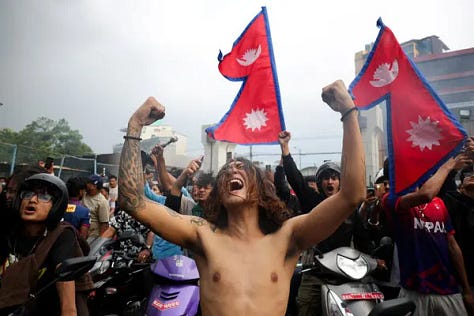
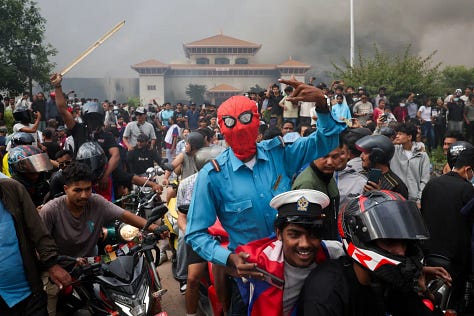
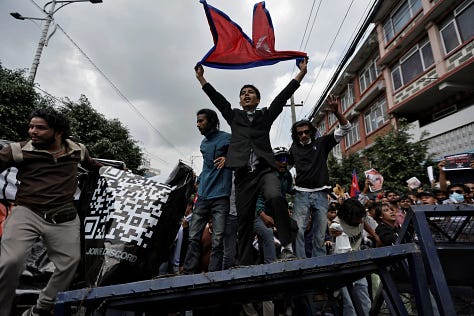
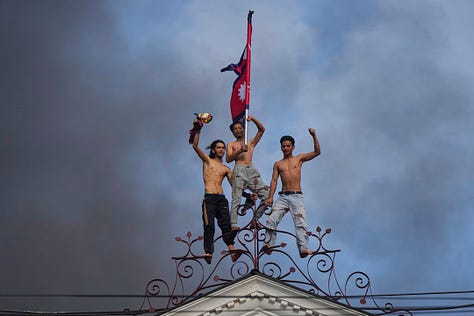

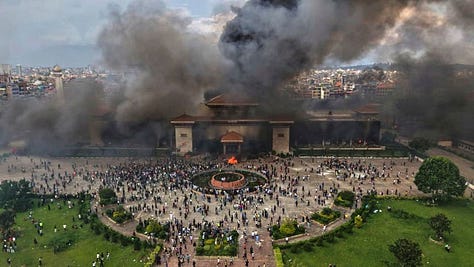
This unique positioning means that controlling Nepal's orientation allows the U.S. to:
Disrupt China-India Cooperation: Nepal sits "at a geopolitical crossroads where China and India are strategically maneuvering" for influence, making it a perfect wedge point
Control Strategic Resources: Nepal's "vast potential for hydropower production has placed it squarely on the radar of US foreign policy interests"
Monitor Border Dynamics: Nepal provides "increased control along the 1,389 km long Tibetan border" between China and India
Project Power: As a "long-standing buffer state," any shift in Nepal's alignment affects "the delicate balance of power" in the region
The timing reveals this as a calculated power demonstration: destabilize a China-aligned government exactly one week after the SCO summit to show both Beijing and New Delhi that regardless of their cooperation within alternative multilateral frameworks, the U.S. retains the capability to create chaos in their shared strategic space.
Investigations have revealed substantial U.S. funding flows into Nepal's civil society sector. In 2024, the National Endowment for Democracy allocated grants to "promote youth civic engagement," "combat corruption," and counter "China's authoritarian influence" in Nepal. Analysis by journalist Nury Vittachi claims NED spent approximately $1.6 million in Nepal, specifically training journalists to "expose corruption and abuse of authority" and organizing Gen-Z youth in political activism. These themes directly parallel the protest movement's core messages.
USAID separately announced $85 million for Nepal last year, with "democracy and effective governance" listed as a primary cooperation area. The government's social media ban, which triggered the protests, came after a viral campaign against "Nepo Kids" - politicians' children displaying wealth on social platforms while average Nepalis earned $1,400 annually. Notably, while Chinese-owned TikTok and other non-U.S. platforms complied with Nepal's registration requirements, American platforms like Facebook and WhatsApp refused to register, forcing the government to implement the ban.
The timing appears particularly convenient for Western interests. Oli was considered Beijing's preferred leader, promoting Chinese infrastructure projects under the Belt and Road Initiative, and his fall potentially weakens China's influence in Kathmandu.
Nepal had recently signed the BRI agreement with China when its relations with India were strained, and the country had been seeking to balance between major powers while maintaining strategic autonomy. Russia's Foreign Ministry spokesman stated Moscow had "no information at all regarding foreign interference" in the Nepal protests. However, UN officials noted that "some accounts suggest demonstrations may have been infiltrated by outside actors, further complicating the volatile security environment".
Critics point to the protests being framed around targeting corruption and authoritarian influence - precisely the themes promoted in NED programming. The fact that the uprising was led by Gen-Z youth, the demographic specifically targeted by foreign-funded political training programs, has added to suspicions. Former Chief Justice Sushila Karki was sworn in as interim Prime Minister on September 12, becoming Nepal's first female head of government. Her selection came through the Discord-organized virtual polling by protesters, an unusual method for governmental transition.
Nepal serves as a "natural barrier" and "strategic depth" between the Indian subcontinent and China, while its "vast potential for hydropower production has placed it squarely on the radar of US foreign policy interests". Nepal assumes a "strategic role for Chinese infrastructural and commercial investments and increased control along the 1,389 km long Tibetan border", making any shift in its government alignment immediately consequential for both powers. As a buffer state practicing "hedging" between the two powers, Nepal represents the perfect demonstration target.
The operation sends an unmistakable message: while China and India cooperate within the SCO framework, the U.S. maintains the capability to rapidly destabilize governments in their shared strategic space, regardless of their multilateral unity. This represents regime change operations as geopolitical theater - "We have this power" - delivered with precision timing for maximum psychological impact on both Beijing and New Delhi.




